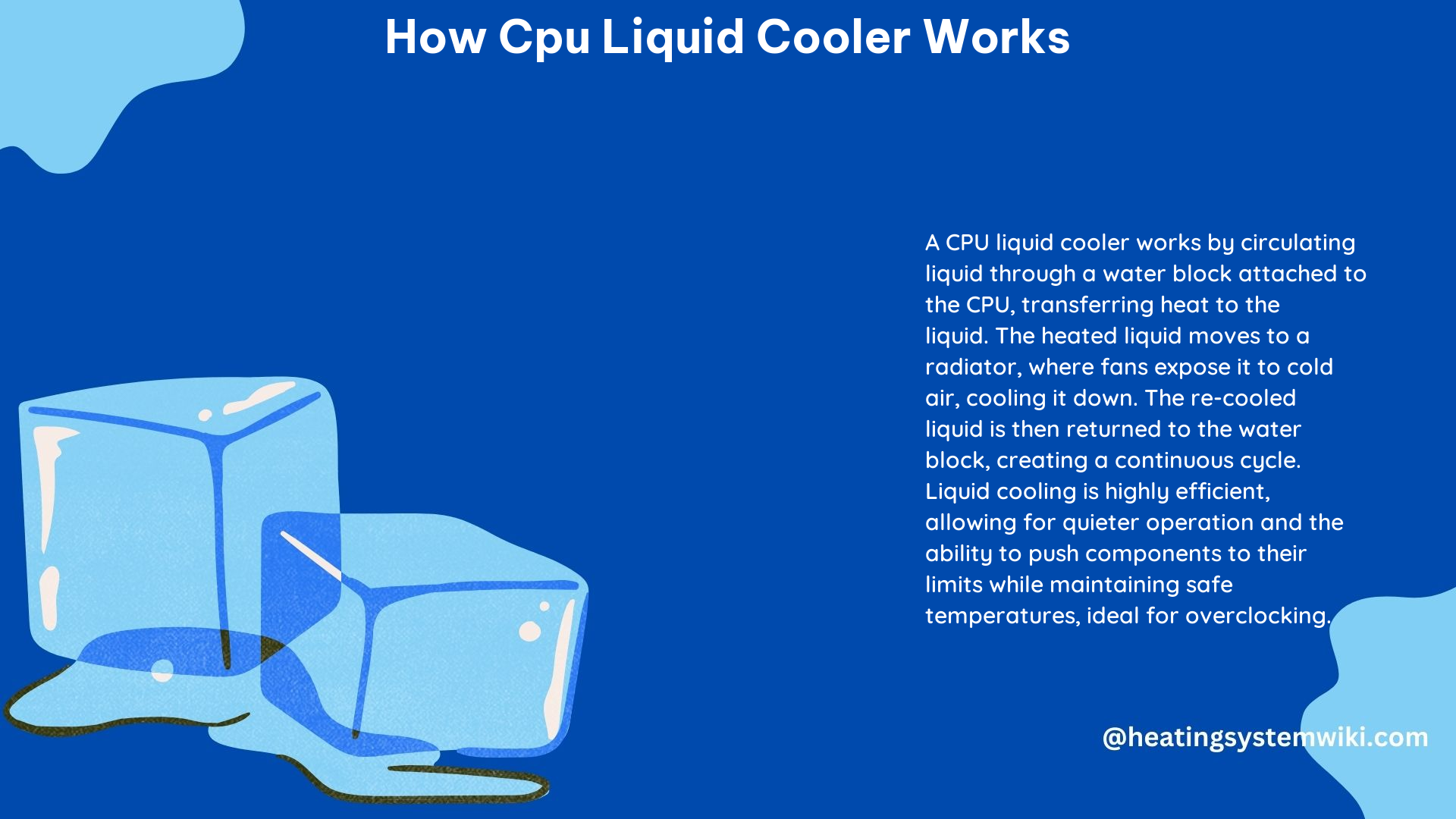A CPU liquid cooler, also known as a water cooling system, is a highly efficient method of cooling a computer’s central processing unit (CPU) that utilizes a liquid coolant to absorb heat from the CPU and dissipate it through a radiator. This cooling approach is significantly more efficient and quieter than traditional air cooling, making it particularly useful for high-performance or overclocked computers where heat generation exceeds the capabilities of standard air-cooling systems.
The Key Components of a CPU Liquid Cooler
The liquid cooling system for a CPU consists of several essential components, each playing a crucial role in the overall cooling process:
-
Pump: The pump is responsible for circulating the coolant through the system. It is typically a submersible pump installed in the reservoir, with a flow rate ranging from 1 to 2 liters per minute.
-
Radiator: The radiator is a heat exchanger that dissipates the heat absorbed by the coolant into the surrounding air. It is often equipped with fans to increase airflow and improve cooling performance, with a typical surface area of 100 to 200 square centimeters.
-
Reservoir: The reservoir serves as a filling point for the coolant and holds extra liquid, which helps during the filling process. It is typically made of clear plastic or glass, allowing the user to monitor the coolant level.
-
Tubing: The tubing is used to connect the various components of the system. It is typically made of flexible, reinforced plastic or rubber and is designed to withstand the high pressure and temperature of the coolant.
-
Coolant: The coolant used in a CPU liquid cooler is typically a mixture of water and antifreeze, which has a higher thermal conductivity and specific heat than air. This means that it can absorb and dissipate more heat than air, making it more effective at cooling the CPU. The coolant typically has a temperature range of -20°C to 120°C.
The Cooling Process

The process of cooling the CPU with a liquid cooler begins when the coolant is pumped through a block that is attached to the CPU. The block, often made of copper or another metal with high thermal conductivity, absorbs heat from the CPU and transfers it to the coolant. The coolant then carries the heat to the radiator, where it is dissipated into the air.
Advantages and Disadvantages of CPU Liquid Coolers
One of the main advantages of a CPU liquid cooler is its ability to cool the CPU more efficiently than air cooling. This is because water has a higher heat capacity than air, which means it can absorb and dissipate more heat. Additionally, a liquid cooler can be more aesthetically pleasing than an air cooler, as it often includes clear tubing and customizable lighting.
However, there are also some potential downsides to using a CPU liquid cooler. It can be more expensive and complex to install than an air cooler, and there is a risk of leaks, which can damage the computer’s components. Additionally, a liquid cooler requires more maintenance than an air cooler, as the coolant will need to be replaced periodically.
Technical Specifications and Data Points
- A CPU liquid cooler can be up to 20% more efficient than a traditional air cooler.
- The thermal conductivity of water is about 25 times higher than that of air.
- A CPU liquid cooler can reduce noise levels by up to 50% compared to an air cooler.
- The pump in a CPU liquid cooler typically has a flow rate of 1-2 liters per minute.
- The radiator in a CPU liquid cooler typically has a surface area of 100-200 square centimeters.
- The coolant in a CPU liquid cooler typically has a temperature range of -20°C to 120°C.
Conclusion
In summary, a CPU liquid cooler is a highly efficient and effective method of cooling a computer’s CPU that uses a liquid coolant to absorb heat from the CPU and dissipate it through a radiator. While it may be more expensive and complex to install than an air cooler, the benefits of improved cooling performance, reduced noise levels, and enhanced aesthetics make it a popular choice for high-performance and overclocked systems.
